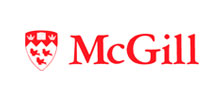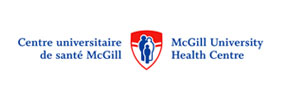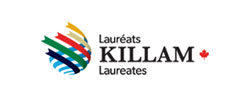Every minute counts when it comes to a stroke. Despite a stroke’s sudden onset, its effects can last a lifetime. At The Neuro, a specialized centre for stroke, with a dedicated Stroke Receiving Area and team that provides rapid care for incoming patients.
The multidisciplinary team of neurologists, neurosurgeons, nurses, technologists, and other health professionals works together to quickly diagnose and treat strokes, helping save lives and preserve brain function.
We spoke with Dr. Catherine Legault, neurologist and co-director of the Stroke Programme at The Neuro, to better understand what happens during a stroke, how to recognize the signs, what treatments are available, and what recovery can look like.
What happens to the brain during a stroke?
Dr. Legault: When natural blood flow to the brain is disrupted for whatever reason, a stroke can occur. By far, the most common type is an ischemic stroke, which is an interruption in blood flow often caused by a blocked artery in the brain. There are also hemorrhagic strokes in which a blood vessel in the brain ruptures, causing bleeding.
A TIA (Transient Ischemic Attack), often called a mini-stroke, involves stroke-like symptoms that resolve completely within minutes to hours. This usually indicates a temporary blockage in an artery that the body clears on its own. Even if symptoms disappear, the underlying causes and risk of a future stroke remain. That’s why we treat TIAs with the same urgency—we conduct imaging and blood tests and may prescribe blood thinners to prevent recurrence.
What are the physical symptoms of a stroke?
Dr. Legault: Common symptoms include:
- Weakness on one side of the body,
- Facial asymmetry (such as a crooked smile),
- Arm or leg weakness,
- Speech difficulties like slurred speech or inability to speak (aphasia).
Other symptoms may include sudden vision changes, dizziness, difficulty understanding language or rare symptoms that can include double vision, difficulty swallowing, or isolated imbalance.
Remember the FAST algorithm:
FACE drooping
ARM weakness
SPEECH difficulty
TIME note the time when the symptoms first appeared and call 911
What should someone do if they suspect they’ve had a TIA?
Dr. Legault: Ideally, patients should see a neurologist or stroke specialist within a few days of a TIA. In Montreal, most hospitals can handle initial assessments and will refer patients to specialized clinics like the Rapid TIA Access Clinic at the Montreal General Hospital. If symptoms are recent or ongoing, it's best to go to the emergency room immediately.
Is it possible to prevent a stroke?
Dr. Legault: Absolutely. Prevention often involves managing cardiovascular risk factors such as:
- high blood pressure
- Diabetes
- high cholesterol
- atrial fibrillation (an irregular heart rhythm)
Some patients are unaware they have it until they experience complications. Fortunately, wearable devices like smartwatches are now helping detect this condition.
For patients who’ve had a stroke or TIA, we conduct a full medical workup and may prescribe blood thinners (like aspirin), anticoagulants, or other treatments to prevent future strokes.
What are the treatments for stroke?
Dr. Legault: If a patient arrives at the hospital quickly—ideally by ambulance—they may be eligible for “hyperacute” treatments. These include
- thrombolysis, which uses a clot-busting medication administered intravenously,
- thrombectomy, a surgical procedure to physically remove the clot from the brain with a catheter.
Not all patients are candidates, but those who are can greatly benefit. These treatments can be life changing. They have transformed stroke care in the last two decades.
When does rehabilitation begin, and what does it involve?
Dr. Legault: Rehabilitation typically begins within the first 48 hours after the stroke, once the patient is medically stable. At that point, a multidisciplinary team—including physiotherapists, occupational therapists, speech-language pathologists, social workers, and nutritionists—starts assessment and care.
If the patient is a candidate for rehab, they’re usually transferred to a rehabilitation centre within 4–7 days. Recovery can last weeks to months and may continue at home or in outpatient clinics.
Recovery depends on the severity, location, and size of the stroke, as well as the age of the patient. Younger patients tend to have better outcomes due to brain plasticity. Some strokes affect only motor function and patients can recover more quickly, while strokes affecting speech or cognition may result in longer recovery periods. Even older patients benefit from rehab, though outcomes may vary. In younger patients, recovery may seem complete on the outside, but cognitive issues like brain fog and fatigue often persist.
Are there technological advancements that support stroke recovery?
Dr. Legault: Yes, although many are still in research phases. Technologies like transcranial magnetic stimulation (TMS) and other neuromodulation techniques are being explored to support cognitive and motor recovery. Over the next 10–15 years, we expect significant changes in how rehabilitation is approached, similar to how acute stroke care has evolved.







